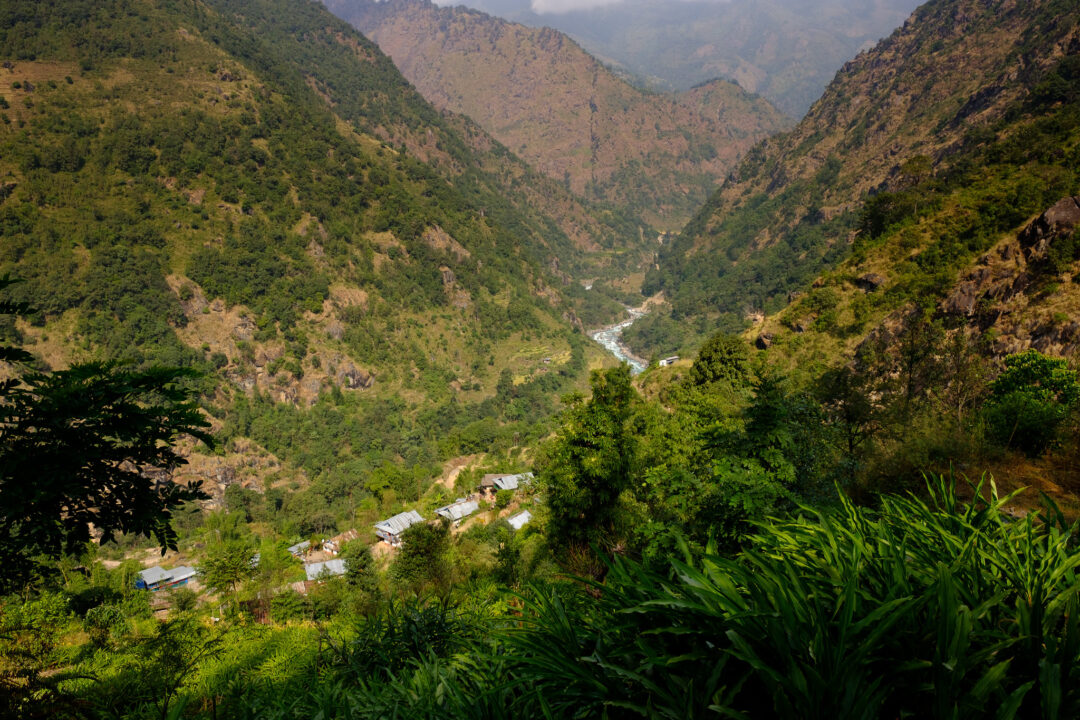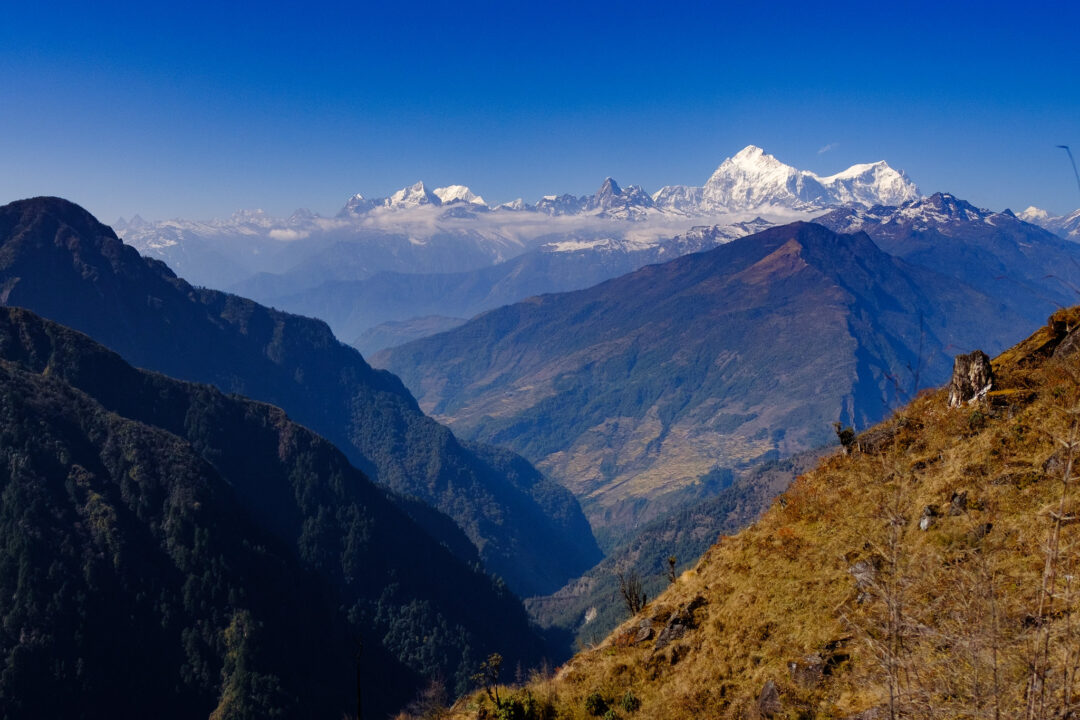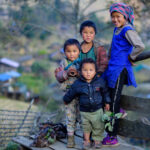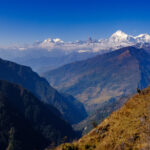Kanchenjunga North Base Camp And Lumba Sumba
Trip Facts
- Destination Kanchenjunga Region Nepal
- Activity Trekking
- Duration 29 Days
- Trip Difficulty moderate
- Max. Altitude 5430m
- Best Time Sep to Dec & March to May
- Start and End Kathmandu - kathmandu
- Meals Breakfast / Lunch / Dinner
- Accommodation 3 star hotel in Kathmandu &Tea house /Camping
- Group Size 2 - 10
- Transportation Private transport & Flight
Trip Highlights
- Adventure around exotic Barun Valley enclosed by towering snow peaks
- On least ventured region of Far Eastern Himalayas to Makalu base camp
- Beautiful forest lined with tall rhododendron, pines, oaks and fir trees
- Trek from cooler mid-hills towards arctic zone of snow, ice and glaciers
- Explore the remote isolated villages adorned with traditional heritage cultures
Introduction
RP Adventures specializes in organizing the Great Himalayan Trail trek, which includes the Kanchenjunga north base camp 5150m via Lumba Sumba Pass. This trek features Lumba Sumba Peak (5,300m) spectacular Himalayan landscapes of the Makalu and Kanchenjunga ranges , diverse ethnic villages (Limbu, Sherpa, Rai, Gurung and Tamang), cultural heritage, endangered wildlife such as the snow leopard and red panda; the base camps of Mount Kanchenjunga and Mount Makalu, and major river systems.
With its huge variety of landscapes and natural beauty, and sometimes harsh and challenging trail conditions, it is no surprise that this is a strenuous trek. Therefore, it is recommended that people tackling this trek have prior experience.
While the majority of the trek passes through scattered pockets of human habitation in the form of villages, monasteries, markets, and schools, there are days when trekkers are completely alone in the wilderness, particularly on the most difficult day—when they cross through the Lumba Sumba Pass. In order to cross the pass, the day starts very early, as after noon, due to weather conditions, it becomes difficult to cross.
During these days off the beaten track, there have been sightings of snow leopards, which would certainly add new excitement to the journey! After crossing the pass, while hiking through the Arun Valley, there is an opportunity for bird watchers to spot several unique and rare species. This trek is the ideal way to enjoy spectacular mountain views and learn something about village life in eastern Nepal, adding a cultural mix of chortens, temples, monasteries, and prayer wheels.
Best Season for Kanchenjunga North Base Camp And Lumba Sumba
The best time to undertake treks in the Himalayas, including the Lumba Sumba Pass and Makalu Base Camp trek, is generally during the pre-monsoon (spring) and post-monsoon (autumn) seasons.
Spring (March to May): This period offers warm weather and the blooming of wildflowers, including rhododendrons, making the trails beautiful. The skies are usually clearer, and you get spectacular views of the mountains. This is a popular time for treks in Nepal, so expect some company on the trails.
Autumn (September to November): This is arguably the best time to trek in the Himalayas. The weather is stable, with clear blue skies providing excellent conditions for mountain views. The temperatures are moderate, making trekking more comfortable. This season follows the monsoon, so the landscapes are particularly lush and vibrant.
Outline Itinerary
Day 01: Arrive in Kathmandu pickup to hotel – 1,300m
Day 02: Explore Kathmandu day sightseeing – 1,300m
Day 03: Fly From Kathmandu 45min to Bhadrapur & drive to Ilam – 03 hrs.
Day 04: Drive to Lelep 1,687 meters via Taplejung, about 8 hours by Jeep.
Day 05: Trek to Amjilosa 2,308m – 6 hrs.
Day 06: Trek to Gyabla 2,730m – 5 hrs.
Day 07: Trek to Ghunsa 3,595m – 5 hrs.
Day 08: Trek to Khanbochen 4,100m – 7 hrs.
Day 09: Resting at acclimatization Day in Khanbochen
Day 10: Trek to Lonakha 4,700m – 07 hrs.
Day 11: Rest day in Lonakha hike to North KBC 5,100m – 06 hrs.
Day 12: Trek back to Ghunsha 3,500m – 08 hrs.
Day 13: Rest Day in Gunsha – 3,500m
Day 14: Trek to Nango La High Camp 4,776m – 04 hrs.
Day 15: Cross over Nango La pass 4,776m and trek to Yangma Khola 3,403m – 06 hrs.
Day 16: Trek to Olangchun Gola 3,191m – 08 hrs.
Day 17: Resting day at Olangchun Gola
Day 18: Trek to Campsite Kharka 4,050m – 05 hrs.
Day 19: Trek to Pass Camp 4,453m – 08 hrs.
Day 20: Cross over Lumba Sumba Pass 5,159m and trek to Thudam 3,556m – 09 hrs.
Day 21: Trek to Kharka 2,700m – 8 hrs.
Day 22: Trek to Chyamtang 2,187m – 5 hrs.
Day 23: Resting day at Chyamtang
Day 24: Trek to Hatiya 1,595m – 6 hrs.
Day 25: Trek to Gola 1,100m – 5 hrs.
Day 26: Trek to Hedangna Gadi 1,120m – 5 hrs.
Day 27: Trek to Num 1,560m – 3 hrs and drive to Tumlingtar 400 m – 4 hrs.
Day 28: Flight Tumlingtar to Kathmandu pick up local airport and drop off hotel – 1,300m
Day 29: Departure Kathmandu Airport – 1,300m
Alternative Treks Around Kanchenjunga North Base Camp & Lumba Sumba Pass Trek
For those drawn to the untouched beauty of eastern Nepal, the Kanchenjunga North Base Camp & Lumba Sumba Pass Trek offers an incredible mix of rugged landscapes, remote trails, and stunning Himalayan panoramas. But if you’re looking for a different adventure in the same region, there are several equally rewarding treks worth considering.
- Kanchenjunga North and South Base Camp Trek – 22 Days: A longer trek that offers a complete experience of Kanchenjunga, including both North and South Base Camps, with spectacular views and remote village encounters.
- Kanchenjunga South Base Camp Trek – 11 Days: A shorter yet equally rewarding trek to the South Base Camp, offering stunning views of Kanchenjunga and a chance to explore the region’s culture.
- Red Panda Tour in Nepal – 9 Days: A unique wildlife experience in the eastern Himalayas, focusing on spotting the elusive Red Panda while exploring lush forests and remote landscapes.
Detailed Itinerary
-
Day 01: Arrive in Kathmandu pickup to hotel - 1,300m
You will be picked up and transferred to the hotel
Altitude: 1300mMeals: BreakfastAccommodation: 3 star hotel in Kathmandu -
Day 02: Explore Kathmandu day sightseeing - 1,300m
Altitude: 1300mMeals: BreakfastAccommodation: 3 star hotel in Kathmandu -
Day 03: Fly From Kathmandu 45min to Bhadrapur & drive to Ilam - 03 hrs
Altitude: 1800mMeals: Breakfast / lunch / DinnerAccommodation: Tea house -
Day 04: Drive to Lelep (1687 meters) via Taplejung, about 8 hours by Jeep
Altitude: 1667mMeals: Breakfast / lunch / DinnerAccommodation: Tea house -
Day 05: Trek to Amjilosa 2308m - 06 hrs
Altitude: 2308mMeals: Breakfast / lunch / DinnerAccommodation: Tea house -
Day 06: Trek to Gyabla 2730m - 05 hrs
Altitude: 2730mMeals: Breakfast / lunch / DinnerAccommodation: Tea house -
Day 07: Trek to Ghunsa 3500 - 05 hrs
Altitude: 3500mMeals: Breakfast / lunch / DinnerAccommodation: Tea house -
Day 08: Trek to Khanbochen 4100m - 07 hrs
Altitude: 4100mMeals: Breakfast / lunch / DinnerAccommodation: Tea house -
Day 09: Resting at acclimatization Day in Khanbochen - 4100m
Altitude: 4100mMeals: Breakfast / lunch / DinnerAccommodation: Tea house -
Day 10: Trek to Lonakha 4700m - 07 hrs
Altitude: 47000mMeals: Breakfast / lunch / DinnerAccommodation: Tea house -
Day 11: Rest day in Lonakha hike to North KBC 5100m - 06 hrs
Altitude: 4700mMeals: Breakfast / lunch / DinnerAccommodation: Tea house -
Day 12: Trek back to Ghunsha 3500m - 08 hrs
Altitude: 3500mMeals: Breakfast / lunch / DinnerAccommodation: Tea house -
Day 13: Rest Day in Gunsha - 3500m
Altitude: 3500mMeals: Breakfast / lunch / DinnerAccommodation: Tea house -
Day 14: Trek to Nango La High Camp 4750m – 04 hrs
Altitude: 4750mMeals: Breakfast / lunch / DinnerAccommodation: Camping -
Day 15: Cross over Nango La pass 4776m and trek to Yangma Khola 3403m – 06 hrs
Altitude: 3405mMeals: Breakfast / lunch / DinnerAccommodation: Camping -
Day 16: Trek to Olangchun Gola 3191m – 08 hrs
Altitude: 3190mMeals: Breakfast / lunch / DinnerAccommodation: Camping -
Day 17: Resting day at Olangchun Gola - 3,190m
Altitude: 3190mMeals: Breakfast / lunch / DinnerAccommodation: Tea house -
Day 18: Trek to Campsite Kharka 4050m – 05 hrs
Altitude: 4050mMeals: Breakfast / lunch / DinnerAccommodation: Camping -
Day 19: Trek to Pass Camp 4453m – 08 hrs
Altitude: 4453mMeals: Breakfast / lunch / DinnerAccommodation: Camping -
Day 20: Cross over Lumba Sumba Pass 5159m) and trek to Thudam 3556m – 09 hrs
Altitude: 3556mMeals: Breakfast / lunch / DinnerAccommodation: Camping -
Day 21: Trek to Kharka 2700m – 8 hrs
Altitude: 2700mMeals: Breakfast / lunch / DinnerAccommodation: Camping -
Day 22: Trek to Chyamtang 2200m – 05 hrs
Altitude: 2200mMeals: Breakfast / lunch / DinnerAccommodation: Camping -
Day 23: Resting day at Chyamtang - 2200m
Altitude: 2200mMeals: Breakfast / lunch / DinnerAccommodation: Camping -
Day 24: Trek to Hatiya 1595m – 06 hrs
-
Day 25: Trek to Gola 1100m – 05 hrs
Altitude: 1100mMeals: Breakfast / lunch / DinnerAccommodation: Camping -
Day 26: Trek to Hedangna Gadi 1120m – 05 hrs
Altitude: 1120mMeals: Breakfast / lunch / DinnerAccommodation: Camping -
Day 27: Trek to Num 1560m – 3 hrs and drive to Tumlingtar 400m – 4 hrs
Altitude: 400mMeals: Breakfast / lunch / DinnerAccommodation: Tea house -
Day 28: Flight Tumlingtar to Kathmandu pick up local airport and drop off hotel - 1,300m
Altitude: 1300mMeals: BreakfastAccommodation: 3 star hotel in Kathmandu -
Day 29: Departure from Kathmandu Airport - 1,300m
Altitude: 1300mMeals: Breakfast
What's included
- International and Domestics Airport pick up and drop
- An Experience English speaking guide and porter (1 porter for every 2 trekkers)
- International pickup and drop by Private vehicle
- Kathmandu City Sightseeing by Private vehicle
- Trekking permits,TIMS and Kanchenjunga National Park and Makalu National Park permits
- 2 Nights 3 star Hotel accommodation in Kathmandu (with breakfast included)
- All Meals during the trek
- Teahouse and Tented Camp accommodation during the trek
- All required camping equipment
- Kathmandu Valley Sightseeing with private jeep and tour guide (Local Monuments entrance fee included)
- Kathmandu to Bhadrapur domestic and Tumlingtar to Kathmandu domestic
- Bhadrapur to Lelep and Ilam drive by jeep
- Num to Tumlingtar drive by jeep
- satellite phone
- Medical kits
- Guide, porter insurance with food and Accommodation
- Basic Medical kits
- Sleeping and duffel bag, down jacket, trekking poles (should be returned after the trek)
- Farewell dinner
- Emergency Helicopter Evacuation Service Arrangement Only (should cover by your travel insurance)
- All required paper works and government taxes
- RP Adventures T-shirt
What's not included
- International Flight
- Nepal Travel Visa Fee
- Personal Medical and Travel insurance (Should cover helicopter evacuation)
- Guide, Porter and Driver tips
- Personal Gears (equipment)
- Personal bill
- Lunch and Dinner in Kathmandu
- All other personal expense of beverages (hard and soft drinks)
- All other things not mentioned in the inclusion
Trekking Gears
The Kanchenjunga region trek offers adventurers a chance to explore one of Nepal's most remote and spectacular areas. This trek takes you through diverse landscapes, from lush valleys to alpine meadows and rugged high-altitude terrains. Trekkers experience the rich culture of local communities and breathtaking views of Kanchenjunga, the world's third-highest peak. It's a challenging yet rewarding journey for those seeking solitude and pristine natural beauty in the Himalayas.
To ensure a safe and comfortable trek in the Himalayan region, it is highly recommended to bring the appropriate equipment and gear to cope with the cold temperatures. The following is a list of essential equipment and gear for Kanchenjunga North Base Camp and Lumba Sumba, which can be purchased either in the Thamel market or brought from your home country:
The following basic checklist for trekking and hiking equipment should assist you in packing for our trips. Keep in mind the importance of minimizing the weight of your clothing and gear. Your packed trek bag should weigh less than 15 kilograms. Remember, this is merely a guideline and not everything listed is essential to bring.
- Lightweight thermal gloves
- Hiking boots
- 2 pairs of thin and 2 pair of thick woolen socks.
- Trekking trousers
- Waterproof (trousers / jacket)
- Base layer shirts
- Underwear (4)
- Sun hat or scarf
- Thin, lightweight (inner socks) (4)
- Head lamp ,spare bulbs, & batteries
- Small padlock to lock trek bag
- Plastic bags - for keeping items dry inside trek bag
- Small wash towel
- Basic First Aid Kit
- Sun protection (including total bloc for lips)
- Trekking poles
- Down jacket
- Water bottle 1 liters
- Hand wash
- Snow glasses and sunglasses
- Duffle bag or kit bag to carry to gear while trekking.
Additional Equipment Checklist
- Headband or Beanie
- Swiss army knife
- Lip guard
- Sun lotion
- Scarf or neck Band
- Rain jacket/ Umbrella
- Beautiful Mountain
Trip You May Like
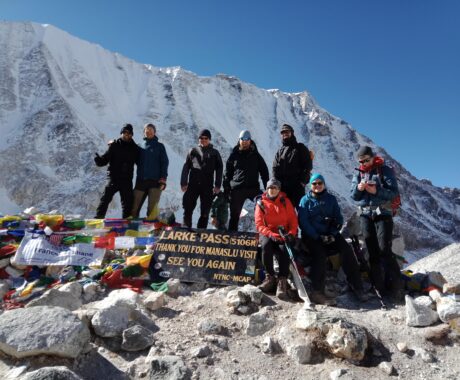
Manaslu Circuit Trek
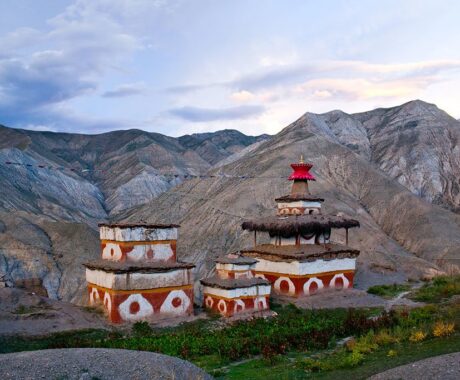
Upper Dolpo Trek
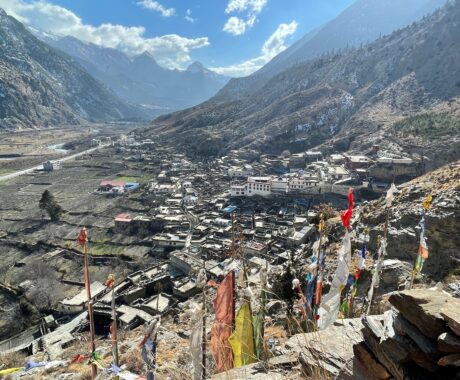
Upper Mustang By Trek


